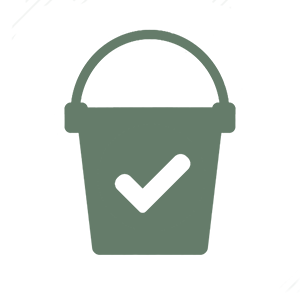In my previous post about SQLite , I only post the way to create database when application started.
In reality, we do not only need a database to store data but also need one to read information from.
So, in this post, I will show you how to use existing SQLite database in Android app.
The basic idea for this case is instead of creating a new database, we copy the exist one to the application’s data folder.
Very simple, right?
Now, we’ll go straight to the demo for easier understanding.
First, create a Test database:
Enter some dummy data:
The very first thing you need to do when you want to use SQLite is create a sub class of SQLiteOpenHelper.
Create some constants for database name, table name, and the database path:
public class DatabaseHelper extends SQLiteOpenHelper {
public static String DB_PATH = "/data/data/ice.tea09.sqlitedemo/databases/";
public static String DB_NAME = "Test.sqlite"; public static final int DB_VERSION = 1;
public static final String TB_USER = "Users";
}
Note that ice.tea09.splitedemo is your project namespace.
Implement constructor, and some methods of super class:
private SQLiteDatabase myDB;
private Context context;
public DatabaseHelper(Context context) {
super(context, DB_NAME, null, DB_VERSION);
this.context = context;
}
@Override
public void onCreate(SQLiteDatabase db) {
// TODO Auto-generated method stub
}
@Override
public void onUpgrade(SQLiteDatabase db, int oldVersion, int newVersion) {
// TODO Auto-generated method stub
}
@Override
public synchronized void close(){
if(myDB!=null){
myDB.close();
}
super.close();
}
Method checkDatabase() allow you to check if the database exists on the phone or not:
/***
* Check if the database is exist on device or not
* @return
*/
private boolean checkDataBase() {
SQLiteDatabase tempDB = null;
try {
String myPath = DB_PATH + DB_NAME;
tempDB = SQLiteDatabase.openDatabase(myPath, null, SQLiteDatabase.OPEN_READWRITE);
} catch (SQLiteException e) {
Log.e("tle99 - check", e.getMessage());
}
if (tempDB != null)
tempDB.close();
return tempDB != null ? true : false;
}Method copyDatabase() used to copy SQLite file in assets folder to data folder of application on the phone:
/***
* Copy database from source code assets to device
* @throws IOException
*/
public void copyDataBase() throws IOException{
try {
InputStream myInput = context.getAssets().open(DB_NAME);
String outputFileName = DB_PATH + DB_NAME;
OutputStream myOutput = new FileOutputStream(outputFileName);
byte[] buffer = new byte[1024];
int length;
while((length = myInput.read(buffer))>0){
myOutput.write(buffer, 0, length);
}
myOutput.flush();
myOutput.close();
myInput.close();
} catch (Exception e) {
Log.e("tle99 - copyDatabase", e.getMessage());
}
}openDatabase() method:
/***
* Open database
* @throws SQLException
*/
public void openDataBase() throws SQLException{
String myPath = DB_PATH + DB_NAME;
myDB = SQLiteDatabase.openDatabase(myPath, null, SQLiteDatabase.OPEN_READWRITE);
}
Finally, createDatabase() method - which will be called every time we launch app. It will check if the database does not exist on the phone, It’ll copy the database to data folder of application:
/***
* Check if the database doesn't exist on device, create new one
* @throws IOException
*/
public void createDataBase() throws IOException {
boolean dbExist = checkDataBase();
if (dbExist) {
} else {
this.getReadableDatabase();
try {
copyDataBase();
} catch (IOException e) {
Log.e("tle99 - create", e.getMessage());
}
}
}
Finally, method that help you retrieve data from database:
public List<String> getAllUsers(){
List<String> listUsers = new ArrayList<String>();
SQLiteDatabase db = this.getWritableDatabase();
Cursor c;
try {
c = db.rawQuery("SELECT * FROM " + TB_USER , null);
if(c == null) return null;
String name;
c.moveToFirst();
do {
name = c.getString(1);
listUsers.add(name);
} while (c.moveToNext());
c.close();
} catch (Exception e) {
Log.e("tle99", e.getMessage());
}
db.close();
return listUsers;
}
The way we using DatabaseHelper in MainActivity:
public class MainActivity extends Activity {
DatabaseHelper dbHeplper;
ListView lvUsers;
ListAdapter adapter;
@Override
protected void onCreate(Bundle savedInstanceState) {
super.onCreate(savedInstanceState);
setContentView(R.layout.activity_main);
dbHeplper = new DatabaseHelper(getApplicationContext());
try {
dbHeplper.createDataBase();
} catch (IOException e) {
e.printStackTrace();
}
lvUsers = (ListView)findViewById(id.lvUsers);
List<String> listUsers = dbHeplper.getAllUsers();
if(listUsers != null){
adapter = new ArrayAdapter<String>(getApplicationContext(),
android.R.layout.simple_list_item_1, android.R.id.text1,
listUsers);
lvUsers.setAdapter(adapter);
}
}
@Override
public boolean onCreateOptionsMenu(Menu menu) {
// Inflate the menu; this adds items to the action bar if it is present.
getMenuInflater().inflate(R.menu.main, menu);
return true;
}
}
Demo result:
Source code:
https://drive.google.com/file/d/0BzvV1wN-WHWwWG5LQm01ZnNJTzQ/edit?usp=sharing


